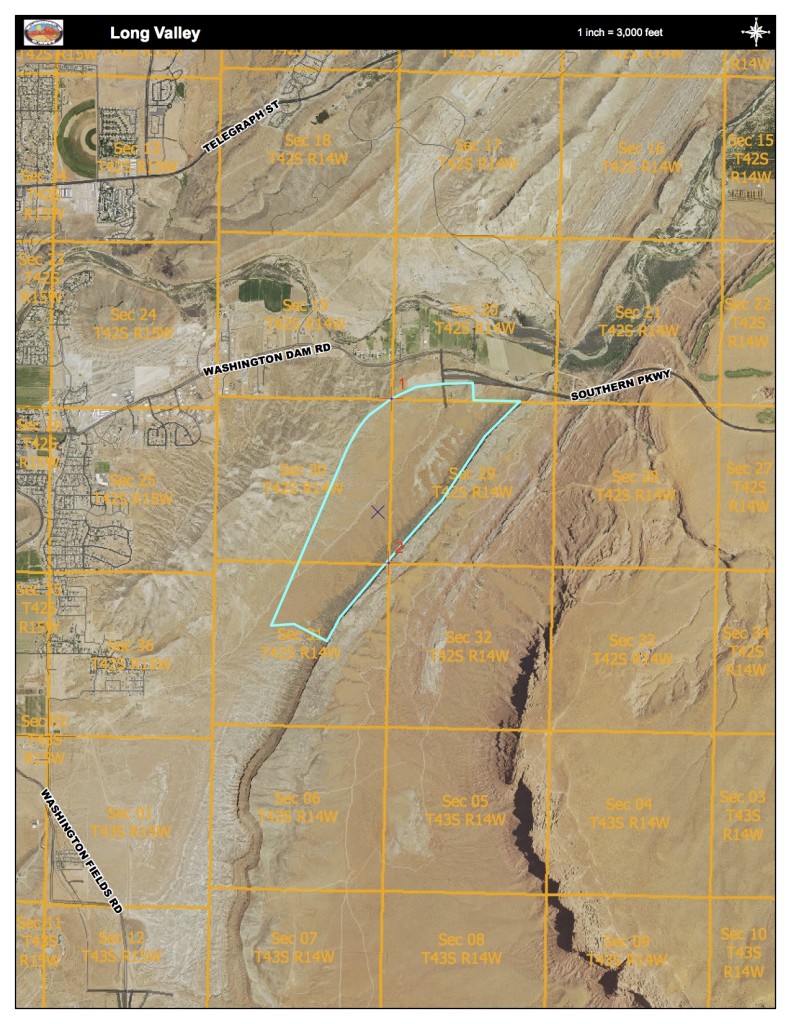
WASHINGTON – The Habitat Conservation Advisory Committee heard another appeal Tuesday from developer Bob Brennan, asking for compensating for property he owns within the Red Cliffs Desert Reserve. Also addressed at the committee meeting were the issues of renewing the Habitat Conservation Plan and possibly removing the Mojave desert tortoise from the endangered species list.
Brennan is one of a handful of landowners who still own 1,288 acres within the reserve, and the remaining private property must either be purchased outright or traded for land of equal value. Brennan is the largest landowner, with about 800 acres still in the reserve.
The Red Cliffs Desert Reserve was created 20 years ago to protect the endangered Mojave desert tortoise while allowing development to continue in the rest of Washington County. The Habitat Conservation Plan set aside the 62,000-acre reserve in exchange for continued development in the rest of the county.
Brennan also proposed that the county impose a fee on builders of about $2,000 to pay him for his property over the next 10-20 years. He said if that agreement could be reached, he would freeze his price on his property now.
“I would donate, I think it was like a third of my property for nothing,” he said, “and they could put a fee on builders, because the builders really are the ones that are the beneficiaries of my property.”
Brennan asked the HCP committee to meet with the U.S. Fish and Wildlife Service and Washington County officials to try to work out a solution.
Committee member Chris Hart expressed frustration with the entire process of acquiring Brennan’s inholdings.
“I would like to have the County Commission advise us as to what they would like us to do,” Hart said. “Mr. Brennan and others know this body is powerless to actually accomplish anything (in this matter), certainly when it comes to assessing fees or increasing taxes.”

The HCP committee meeting is a good forum for Brennan to come and get something on the record, Hart said, but not to actually get any results.
“If the County Commission would like this body to put together a recommendation since we are an advisory committee, then I think we should take that seriously and look at that and make a recommendation,” Hart said. “I’d like to know if there’s something they’d like us to do.”
Sandberg said he would relay the message to the County Commission but noted that county officials are “very keenly aware” of all of the issues regarding the remaining property owners.
Permit renewal
The Habitat Conservation Plan expires this year, and Washington County submitted a renewal application in January 2015. U.S. Fish and Wildlife officials who oversee the process have said that the existing permit will remain in place even after the plan expires, as long as there are good-faith negotiations underway to resolve the issue with remaining landowners in the Reserve.
HCP administrator Bob Sandberg reported that the permit renewal process is still ongoing. The HCP officials are still working with the U.S. Fish and Wildlife Service.
“I think we’re in fairly good shape,” Sandberg said. “I haven’t heard any dealbreakers at this point.”
Sandberg said he is applying for funding under Section 6 of the Endangered Species Act for the acquisition of land inside the reserve. He said he is hopeful but also realizes there are a lot of competing requests for the money.
National Conservation Area Manager Dawna Ferris-Rowley said her office is applying for a Land and Water Conservation Fund appropriation. Funding from this source could be used to acquire property along the Virgin River in the Babylon area.
Delisting the tortoise?
During the public comment period of the meeting, Bette Arial asked if getting the Mohave desert tortoise taken off of the endangered species list was possible and if so, when that might happen.
“I just wondered, is there a date or a number or any kind of goal that we might be getting close to reaching where the tortoise could be delisted?” Arial said.
Sandberg said that getting the desert tortoise delisted is the goal; however, there is no date in sight. Historically, tortoise numbers have declined, although the population has now stabilized. The tortoise population would need to increase and keep increasing, Sandberg said.
“It needs to have an upward trend, and the trend needs to be upwards for 25 years,” Sandberg said.
Ann McLuckie of the Utah Division of Wildlife Resources said the tortoise would have to be delisted as a whole across the Mohave desert, not just in the Red Cliffs Desert Reserve. The tortoise lives in Nevada and California as well as Southern Utah.
After a drought in 2002 and wildfires in 2005 and 2006, the tortoise population dropped about 50 percent, McLuckie said. It has remained stable for the past few years.
Email: [email protected]
Twitter: @STGnews
Copyright St. George News, SaintGeorgeUtah.com LLC, 2016, all rights reserved.
